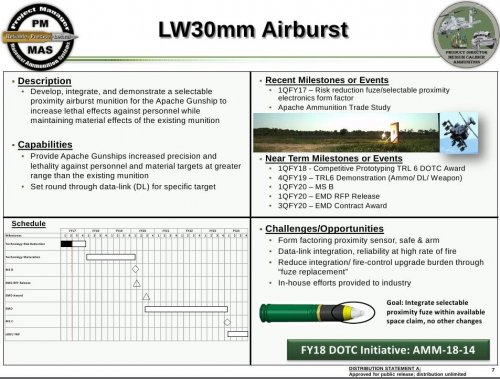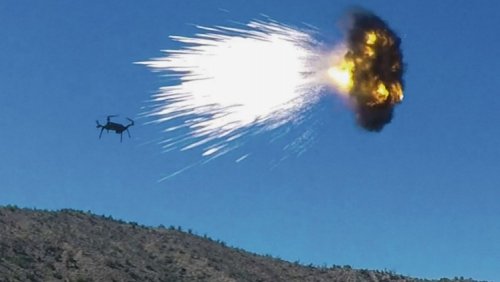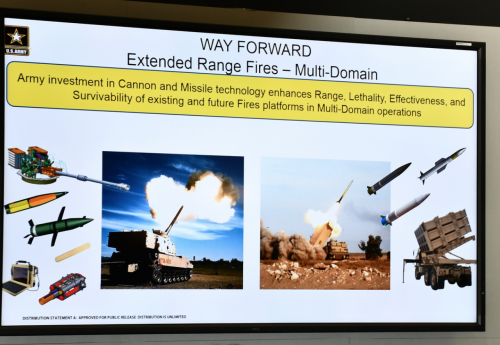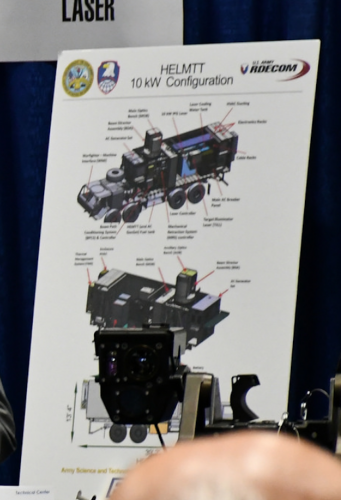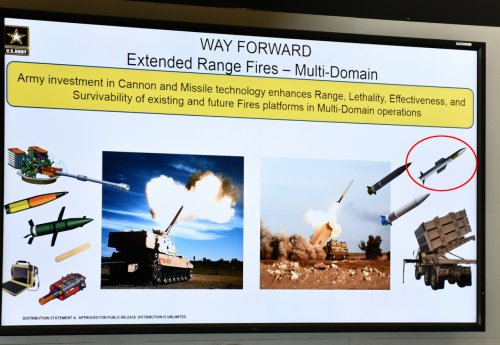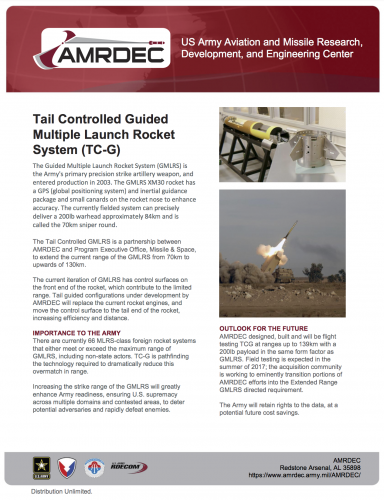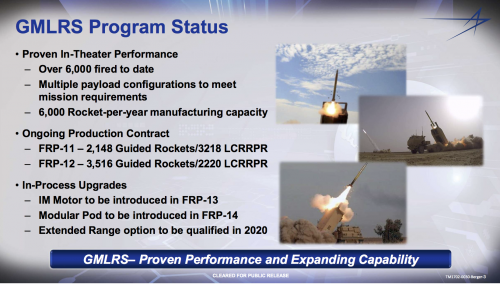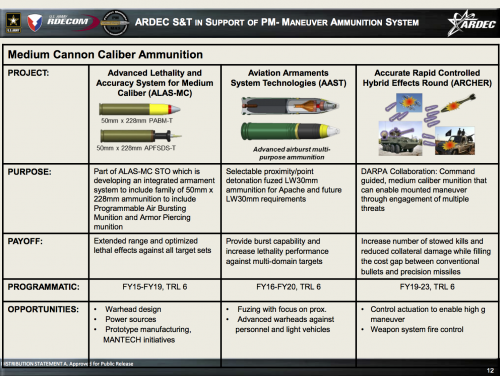Orbital ATK is developing a range of new advanced medium-calibre ammunition
variants for use with its 30/40 mm calibre MK44 XM813 and 30 mm calibre lightweight
XM914 Bushmaster Chain Guns. The new ammunition types – command-guided,
proximity fuze, and air burst – are intended to deliver enhanced capabilities for a wide
range of land and air combat platforms.
Development of the 30×173 mm command-guided round leverages technologies
evolved by Orbital ATK for the US Defense Advanced Research Projects Agency
(DARPA) Extreme Accuracy Tasked Ordnance (EXACTO) programme.
The EXACTO effort has resulted in a guided .50 calibre round – equipped with real-time
optical sensors and aero-actuation controls – that improves sniping performance in
long-range, day/night engagements. The EXACTO system combines a manoeuvrable
bullet with a complementary laser designator-equipped fire-control system (FCS) to
compensate for weather, wind, target movement, and other factors that can reduce
accuracy.
The sniper uses the laser designator to determine and track the target. Once fired,
actuators inside the bullet – which can correct its movement up to 30 times per second
in flight – receive data from the optical sensor to guide it to the target. For the new
30×173 mm guided round, the target is locked with a radar sensor, while a networked
FCS delivers updated course correction and target information via a datalink to an
unspecified command guidance sensor located in the back of the munition.
“It’s a one shot, one kill capability in one round,” Tim Strusz, Director Business
Development, Precision Weapons at Orbital ATK told Jane’s .
“In terms of operational cost effectiveness, the round pays for itself with a single shot,” he added.
http://www.janes.com/article/75087/orbital-atk-progresses-new-medium-calibre-munition-development

